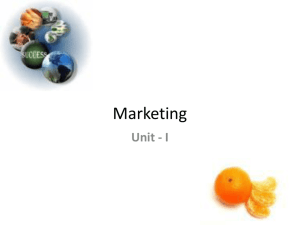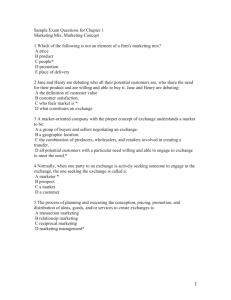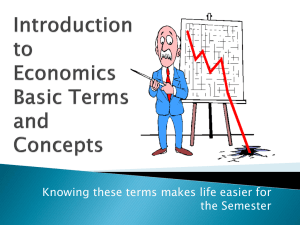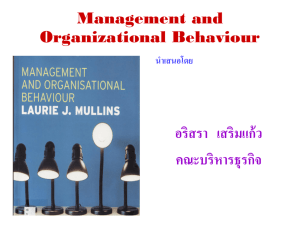Session 04
advertisement
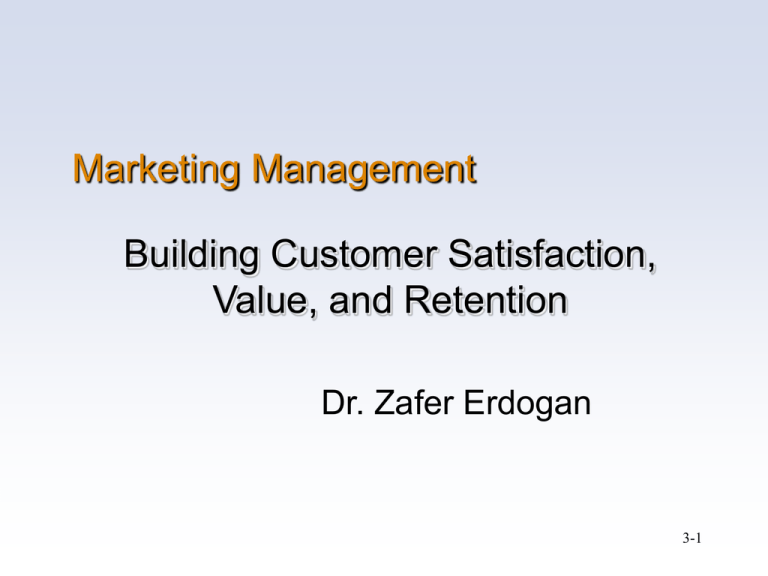
Marketing Management Building Customer Satisfaction, Value, and Retention Dr. Zafer Erdogan 3-1 Kotler on Marketing It is no longer enough to satisfy customers. You must delight them. 3-2 Defining Customer Value and Satisfaction • Customer Perceived Value (CPV) – Difference between • Total customer value – Total monetary value of economic, functional and psychological benefits associated with a product offering • Total customer cost – Total cost of evaluating, obtaining, using, and disposing of a given product offering 3-3 Figure 3.1: Determinants of Customer Delivered Value 3-4 Defining Customer Value and Satisfaction • Total Customer Satisfaction – Satisfaction-feelings of pleasure or disappointment – Expectations vs. perceived performance • Customer Expectations – Formed by past experiences, friends’, marketers’, competitors’ information and promises • Delivering High Customer Value – Value proposition-whole cluster of promises offered – Value-delivery system-communications and channel experiences offered to customers • Measuring Satisfaction 3-5 Tools for Tracking and Measuring Customer Satisfaction Complaint and A customer-centered organization makes it easy for customers to register suggestions and complaints. Some suggestion customer-centered companies establish hot lines with tollsystems: free numbers. Companies are also using Web sites and e-mail for quick, two-way communication. Customer satisfaction surveys: Ghost Shopping: Although customers are dissatisfied with one out of every four purchases, less than 5 percent will complain. Most customers will buy less or switch suppliers. Responsive companies measure customer satisfaction directly by conducting periodic surveys. Hire people to pose as potential buyers and report on positive and negative experiences. Lost customer Contacting customers that have switch to competitors’ offerings and learn why this has happened analysis See text for complete table 3-6 Delivering Customer Value and Satisfaction In a hypercompetitive environment of these days, winning companies need to create and deliver superior value. Value Chain (Michael Porter) – Every firm is a collection of activities – Primary activities: inbound logistics-operationsoutbound logistics-marketing and sales-services – Support activities: procurement-tech developmentHRM-firm infrastructure The task is to examine costs and performances of each value-creating activity and look for ways to improve it. Benchmarking-Best of class practices of best companies 3-7 Figure 3.3: The Generic Value Chain 3-8 Delivering Customer Value and Satisfaction The firms success depends not only each dept performance but also how well they are coordinated Usually, every dept cares their interest not the firm’s Solution! Emphasis on Core Business Processes such as – – – – The market sensing process The new offering realization process The customer acquisition process The customer relationship management process – The fulfillment management process 3-9 Delivering Customer Value and Satisfaction The Value Delivery Network (Supply Chain) – Companies need to look beyond their operations to gain competitive advantage – by partnering with their suppliers and distributors to create superior Supply Chain Levi Strauss’s ValueDelivery Network 3-10 Attracting and Retaining Customers • Partner relationship management (PRM) – Implies working with partners • Customer relationship management (CRM) – Process of managing detailed info about each customer and carefully managing all the customer “touch-points” with the aim of maximizing their loyalty. 3-11 Attracting and Retaining Customers • Attracting Customers • Computing the Cost of Lost Customers – Customer churn, gain customers only to lose many others like adding water to a leaking pot – Customer defection rate, the rate at which companies lose customers – Lifetime value, the present value of the profit stream could have been realized if the customer had not defected prematurely. 3-12 Attracting and Retaining Customers • Measuring Customer Lifetime Value (CLV) CLV=Annual customer revenue (x) Av. number of loyal years (x) company profit margin • So, do we need for Customer Retention? • Yes! – Acquiring a new customer costs 5 times more – The average company loses 10% of its customers – 5% reduction in the defection rate can increase profits by 25-85% – The customer profit rate tends to increase over the life of the retained customer 3-13 VIDEO CASE: CUT IT OUT Please read the case before coming to class which is on p.88 !.. 3-14
